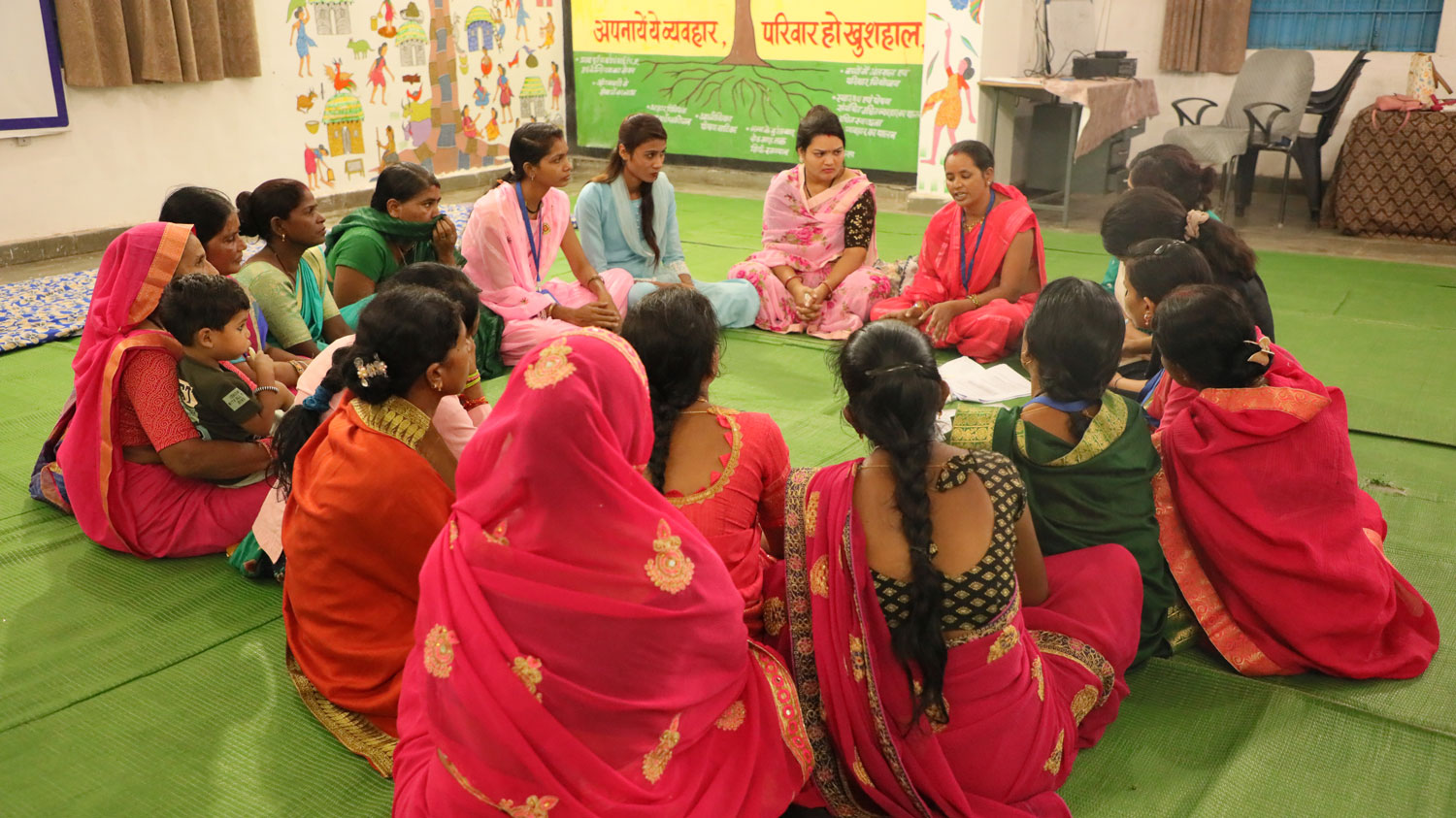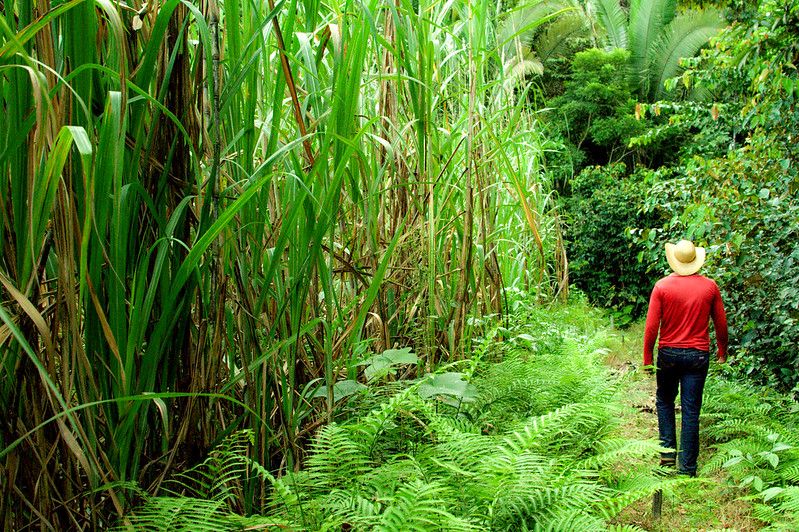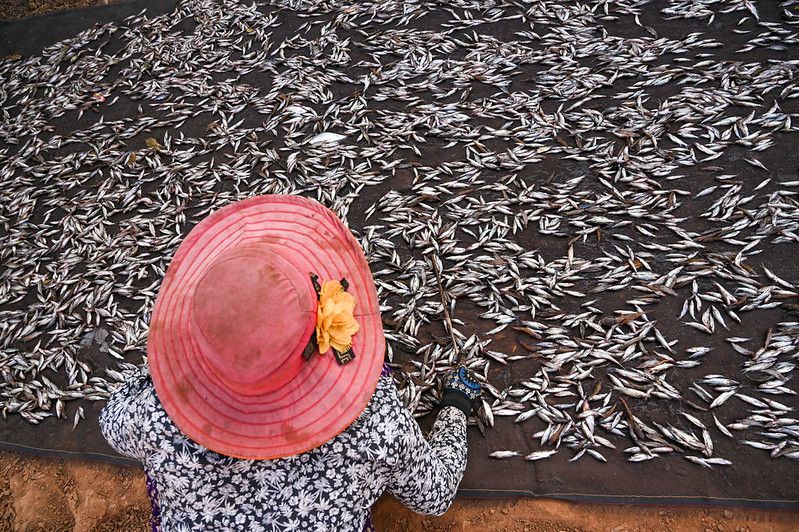In recent decades, there has been a steady increase in the production and consumption of fish worldwide. This has positioned aquaculture – the farming of aquatic organisms in inland and coastal areas – as a development option with much potential to contribute to several inter-related Sustainable Development Goals. As an economic activity, aquaculture provides a source of income for people in low- and middle-income countries. Aquaculture also provides the opportunity to increase the availability and consumption of nutritious food and improve gender equality in accessing and benefiting from these economic resources.
Despite recognition of the potential for international development, there is limited understanding of aquaculture’s effectiveness. To fill this gap, 3ie conducted a systematic search and analysis of studies looking into the effectiveness of aquaculture interventions on four main outcome groups: productivity, income, nutrition, and women’s empowerment.
Our systematic review finds that aquaculture interventions improve productivity and income for fish farmers in most contexts. However, we need more and more rigorous measurement of impact, particularly on nutrition and women’s empowerment outcomes. While many aquaculture programmes target low- and middle-income countries, there is an overall lack of rigorous impact studies. The studies that could be included also had an overall high risk of bias and do not usually allow for subgroups analysis. The latter prevents us from better understanding how these programs affect individuals involved in aquaculture and their families.
Overall, the review highlights that the aquaculture policy and programming sectors could benefit from increasing the evidence base and encouraging the use of reporting standards such as TIDieR or CONSORT-SPI. This would allow decision-makers to directly compare programs and identify the ones most effective in improving the lives of men and women involved in aquaculture activities. As investment in aquaculture seems to be scarce despite the potential, a better understanding of the evidence is key to advance this sector as a development alternative.
Included aquaculture programs
We screened almost 12 thousand records from 26 academic databases and grey literature sources to find suitable studies. While we were able to identify a vast amount of aquaculture programs across a variety of low- and middle-income countries, many of these studies did not use appropriate methods to identify an effect that is attributable to the intervention. We excluded 70 studies from 27 different countries because their study design did not allow for an assessment of program impact. We ultimately included 21 impact evaluations covering 13 aquaculture programs in six countries:
| Sno | Program name | Country |
|---|---|---|
| 1 | Adivasi Fisheries Project (AFP) | Bangladesh |
| 2 | Community Based Fish Culture in Seasonal Floodplains and Irrigation Systems (CBFC) | Bangladesh |
| 3 | Development of Sustainable Aquaculture Project (DSAP) | Bangladesh |
| 4 | Mymensingh Aquaculture Extension Project (MAEP) | Bangladesh |
| 5 | Greater Noakhali Aquaculture Extension Project (GNAEP) | Bangladesh |
| 6 | NGO Banchte Shekha (unnamed programme) | Bangladesh |
| 7 | Sustainable Agriculture, Food Security and Linkages Project (SAFAL) | Bangladesh |
| 8 | Fish on Farms (FoF) | Cambodia |
| 9 | Sustainable Market Access through Responsible Trade of Fish (SMART-Fish) | Indonesia |
| 10 | Economic Stimulus Programme (ESP) | Kenya |
| 11 | Second National Fadama Development Project (Fadama II) | Nigeria |
| 12 | Third National Fadama Development Project (Fadama III) | Nigeria |
| 13 | WorldFish Integrated Aquaculture-Agriculture Dissemination (IAA) | Malawi |
While the components of these programs covered many stages of the aquaculture value chain, they most commonly provided training and production technology to aquaculture farmers. Additionally, and as expected, all these programs aimed to increase the productivity of the aquaculture process and the income of beneficiaries. Just a few of them also included other social objectives: only six programs explicitly aimed to increase nutrition-related outcomes of participants, and five intended to increase the empowerment of women involved in aquaculture.
What does this evidence tell us?
Our review shows that aquaculture interventions positively impact the value of aquaculture production, the income of participants, and their total household expenditures. We identified the most evidence relating to effects on productivity and income as up to ten of the 13 programs reported comparable outcomes. We found less evidence for the nutrition pathway. Only six programs measured outcomes related to nutrition, and we were able to identify a positive effect of aquaculture interventions on their beneficiaries’ consumption of fish.
There is even less rigorous evidence measuring the impact of aquaculture interventions on women’s empowerment. Only three programs of the 13 reported women’s empowerment outcomes, but due to differences in the measures used and the way they were reported, it was hard to compare them in a meaningful way. The studies for these three programs showed mixed results, in part because they measured different aspects of women’s empowerment in different ways. We faced similar challenges when trying to identify barriers and facilitating factors that affect how these programs are set up, implemented, and adopted, and when assessing the cost-effectiveness of these programs.
The data used and reported from the included programs posed some challenges to understanding how they may be affecting their beneficiaries’ lives. When looking at the quality of these studies, we assessed that at least half of them would have a high risk of bias in how the authors conducted, analyzed, or reported study results. Only two studies were categorized as having a low risk of bias, which indicates that, overall, the quality of this body of evidence is rather low, particularly for studies using quasi-experimental designs.
The studies included in the review do not usually report results for subgroups among program participants. For example, only one study presented sex-disaggregated data. Without such data, we cannot tell if these programs affect men and women differently. Finally, seven of the 13 programs included in the review examine programs implemented in Bangladesh. The main implication is that the review results are more applicable to Bangladesh than to the rest of the countries covered.
One lesson we could learn from this review is that more rigorous research is needed to better understand how aquaculture programs can be a development driver in low- and middle-income countries. Moreover, if new evaluations measure outcomes in a more standardized way and follow reporting guidelines that include relevant aspects of these programs, their comparison could be richer and more straightforward, which could better inform what works in aquaculture, for which groups, why, and at what cost.
While the final systematic review report is in press, you can find the protocol describing the background, objectives, and methods of the review here. To learn more about 3ie’s Aquaculture project, visit our webpage.










Congratulations to the team and thanks for bringing up the issue of measuring impact of aquaculture programmes. Just to complement your assessment, the following key considerations need to be taken into account in designing, implementing and evaluating aquaculture programmes.
Context. Contextual factors are determining success or failure of the programmes. While in some instances, for example in the case of SAFAL programme in Bangladesh, the context of increasing consumer demand for aquaculture production, rising consumption among population, and overall conducive environment for aquaculture sector, have influenced the positive developments and generated positive impact from SAFAL programme implementation. In contrast, e.g. in
Large scale (commercial) via small-scale (community/individual): The issue of scale of production is also a key factor affecting success of aquaculture programmes. Commercial entities are better positioned in terms of market access, logistics and transportation, as compared to small-scale community-based fishing farms. Even in cases, where projects benefiting communities have been linked to the commercial entities, the success may not be guaranteed. In Zambia, for example, it took more time than anticipated to convince commercial actors to invest in smallholder aquaculture and expand the geographic coverage of their aquaculture businesses to other provinces due to high risk in investing in smallholder aquaculture ( NORAD evaluation of AQ TEVET 3.5-year project implemented by the WordFish from June 2018 to December 2021).
Inclusiveness. The issue of gender equality identified in your research is critical. Traditional norms and distribution of household responsibilities may be a key factor in affecting level of women's participation in small businesses, including fish farming.
Trade-offs and unintended outcomes: While aquaculture projects generally generate positive impact in terms of income, nutritional benefits and employment, there are some trade-offs and unintended outcomes that might be considered, including possible. In many developing countries, family fish farming engages children. According to FAO estimates for previous years, the "..aggregate data indicate that about 60 per cent of child labourers – that is over 129 million children – work in agriculture, including fisheries and aquaculture" (https://www.fao.org/policy-support/tools-and-publications/resources-det…).
These are just a few additional considerations In moving forward with your future research and analysis efforts in this thematic area.
Kindest regards,
Serdar Bayryyev
Senior Evaluation Officer
Food and Agriculture Organization